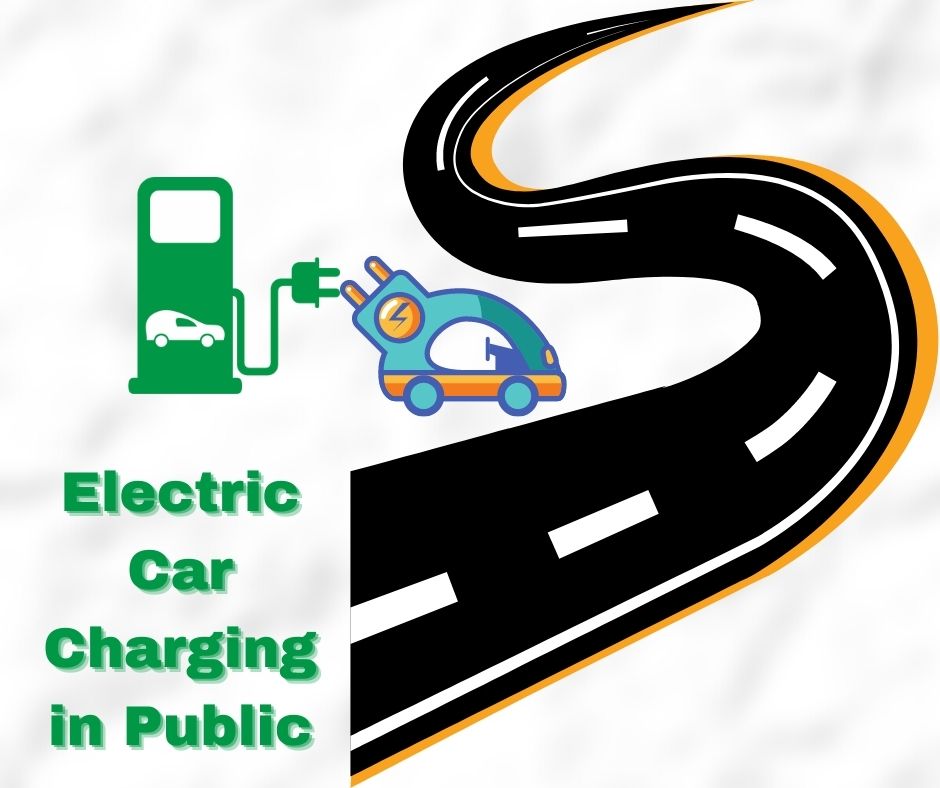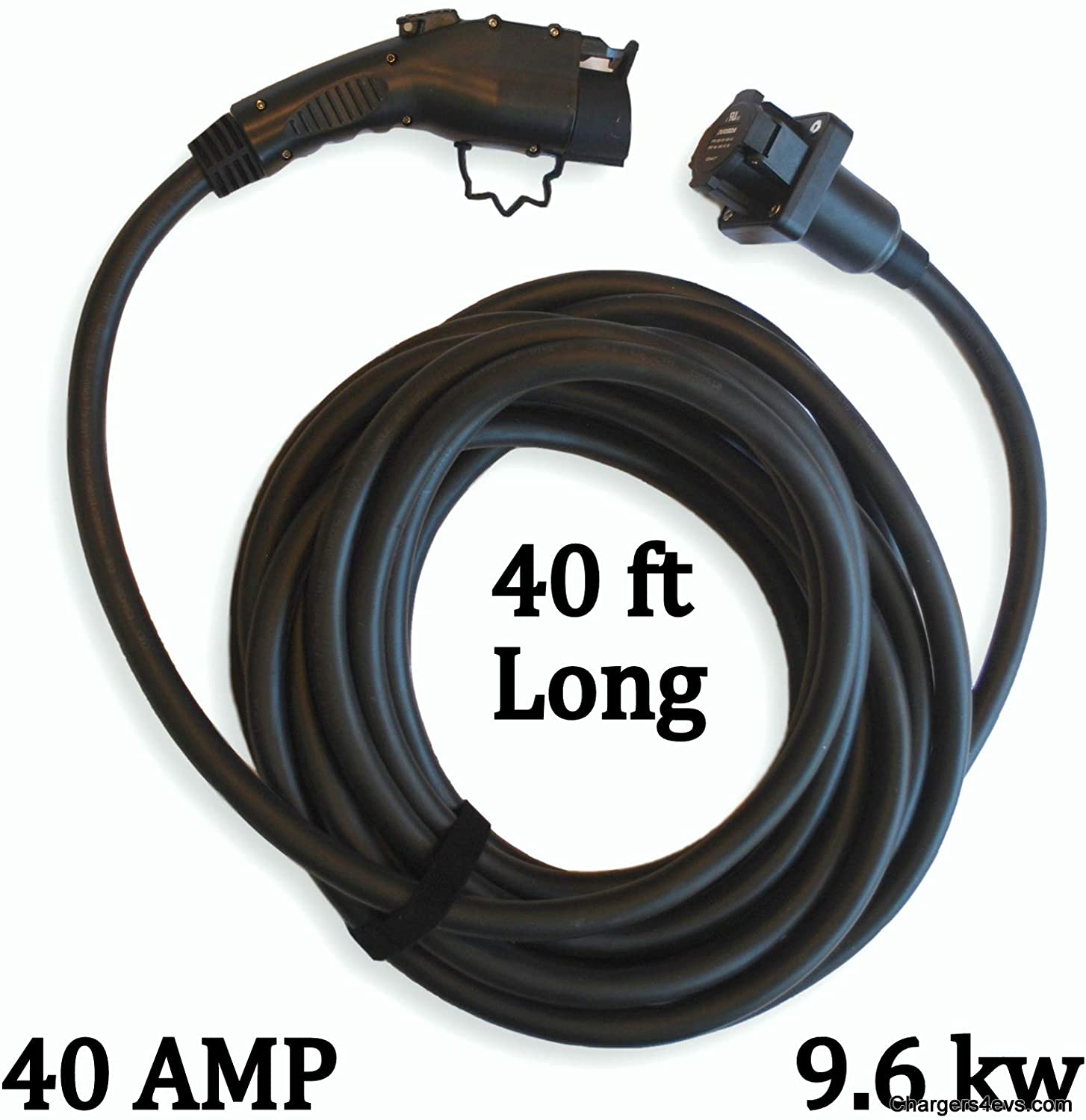Last Update: August 24, 2021

If you've read Electric vehicle charging scenarios you know that Base Charging is when you solely charge your car at home or other base of operations. With base charging you do not use any public charging station to recharge the vehicle, but instead rely on the charging station at your base of operations.
By definition using a public charging station is not base charging. Instead you are away from home, in one of these scenarios:
- Destination Charging, where the car is charged both at the home base and at the destination,
- Opportunity Charging, where the car is charged as the opportunity arises while driving around town,
- Charged at one or more charging locations while en-route to a distant location.
When do you charge your electric car in public? It's recommended to charge at home as much as possible. But, if you're away from home, and the state of charge runs low, then of course you must use a public charging station. Think of the three modes just described, and several scenarios will come to mind. A fourth scenario are those who have no ability to charge at home, perhaps because they live in an apartment, in which case they will always charge at a public station.
Where do you charge your electric car in public? Electric cars can be charged either at a charging station, or if you carry a portable charging station at a regular power outlet. As we discuss below several smart phone app's exist showing charging station locations.
Using a public charging station is different from what we do at gasoline stations. First, we are using electricity as a fuel, but the user experience of plugging a charging cord into a charging socket is very similar to inserting a fueling hose into the car. Instead, the primary differences are:
- Finding the charging station locations
- Membership in charging networks
- Paying for the charging session
- Etiquette for sharing public charging stations with others
- The electric car charging process at a public charging station
Let's dive in and cover each of these.
How do I charge my electric car in public
The physical process of electric car charging at a public station is almost the same as doing so with the station at home. You're taking the charging cord and inserting it into the charging socket on the car. Some additional steps required are:

- Authenticating with charging station: Most public charging stations require that the user is authenticated with a charging network. At gasoline stations we either use a credit card at the pump, or pay an attendant, but that's usually not true with EV charging. Authentication lets the network control access, charge fees, send notifications via text message to your cell phone, etc. Authentication methods include:
- Waving an RFID card over a reader
- Reading a QR-Code with a cell phone app
- Paying with credit card
- No authentication required: In some cases authentication is not require, and you instead simply plug the charging cord into the car. The charging station map applications usually tell you whether authentication is required, and if so which charging station network. Before you drive miles to a charging station, it's useful to know whether you're a member of the necessary charging network.
- Plug in: If you're at a Level 2 station, this will be identical to what you do at home. However if you're at a fast charging station the charging plug will be different. Make sure to familiarize yourself with the plug.
- Start the charging session: This may not be necessary, depending on the charging station design. In some cases you must press a button. For example some multi-cord stations require you to select the cord to use.
- Inspect display or smart phone app: Most charging networks supply a smart phone app through which you can monitor the charging session, among other functions. In most cases you can monitor the session from any distance, thanks to modern data communications wizardry.
- Charging network membership: In most cases public charging stations are operated by a charging network like ChargePoint, Electrify America, or Ionity. To authenticate with the charging station requires a card that is sent by the charging network. The card usually has an RFID chip, and you wave it in front of an RFID reader on the charging station. In some cases a QR Code will be shown on the station, which you can read using a smart phone application.
- Paying charging fees via the charging network: In most cases the fees for charging sessions are paid through the credit card you have on file with the charging network. In some cases charging stations have credit card readers allowing anyone to use the station just by using a credit card.
- Charging station Etiquette: Public charging stations are scarce enough that we must learn to share this valuable resource with other electric car owners. See Charging station etiquette - effectively sharing limited electric car charging resources
- Having something to do while the car is charging: Since a full charging session can take a half hour up to several hours, depending on charging station power, it's useful to have something to do while you're waiting. If you're at the office, or at church, or many other locations, there are obvious things to do like perform your job. In other cases you might find a nearby restaurant or coffee shop or toilet, just as you'd do when refueling a gasoline car.
In short, beyond inserting the charging cord into the charging port, there are a few additional activities associated with using a public charging station. Some of these activities are the same as what we'd do with gasoline cars, while a few are different.
How to find public electric car charging stations
Because public electric car charging stations aren't as ubiquitous as gasoline stations, you probably won't stumble across one when you need a recharge. In the future that may change as the public charging network becomes more prominent. For now, you must use smart phone app's that have charging station maps, such as PlugShare. See -- Smart-phone apps for finding electric car charging station networks. These apps maintain lists of public charging stations, and are an excellent resource.
The good news is most of us have two primary places to charge. The first is at home, and the second is at your workplace. Talk your employer into installing a few charging stations, and you'll be covered with charging access most of the time. Employers give little perks to employees all the time, it's called employee retention. As electric cars become more popular more employees will be looking to charge their car while at the office. While charging at home is the most convenient place to refuel your car, charging at the office is the second most convenient place.
You can try to look for charging stations as you drive around. Some charging stations are simply there, and are not listed in these smart phone applications.
Suppose you see a charging station located at a business. Does that mean you're allowed to use the station? If you're a customer of that business, it's likely to be available as a perk, so ask. But, in other cases that station is likely meant for employees, and it would mean trespassing onto private property to use the station. Your need to recharge your car does not mean you can violate laws.
One non-obvious resource are the Tesla Destination Chargers. Even if your electric car is not a Tesla, you might be able to use the Destination Chargers, which are Tesla's answer to "Level 2" charging stations. Adapters are available allowing EV's with normal J1772 charging ports to charge at a destination charger.
Another non-obvious resource is regular power outlets. Electric cars can recharge from any power outlet so long as you have a portable charging station.
- For general advice about driving into areas with no charging stations Can you drive an electric car away from charging network coverage areas?
- For information on portable charging stations: Best portable electric car charging stations for home or on trips
- For information on extension cords to use with electric cars see: Safely use Extension Cords when charging an electric car or electric motorcycle
- Just as the charging station map applications list charging stations, they also list regular power outlets that are known to be available for electric car drivers. See Smart-phone apps for finding electric car charging station networks
The naysayer story about electric car charging is it's inconvenient to wait 4 hours to recharge the car. When charging at home or charging at the office, your time is impacted by only the 30 seconds it takes to plug in to start charging. You then walk inside, and have your work day or your evening with the family. While it took 4 hours to recharge, your personal time is not impacted with 4 hours of time cost.
How to get and maintain a charging network membership
Most of the public charging stations are owned by charging networks. Each network owns or operates hundreds or thousands of charging stations across a region or country or continent. The charging networks usually require a membership (identification) card to use the charging stations.
Getting the membership is done through the website for the charging network. Signup is usually free, and you usually provide a credit card number so the network can bill you for usage.
We already talked about his in: Step 6 – Charging station network memberships and smart phone apps.
It is important to make a list of the charging networks in your area, and join each one. Browse the charging station maps to discover local charging networks.
For a list of known charging networks: Known electric car charging networks around the world
Paying for electric car charging sessions
Some charging stations are free, as in zero cost. In such cases the cost is subsidized either by a government, or by a business. See A brief study of EV Ownership Economics
For the stations that charge fees, it's typically handled one of two ways. In some cases there is a credit card reader in the station. In other cases you must have a membership as just outlined, in which case you will have already given the charging network a credit card number.
The listing in the charging station map application will describe which network (if any) own/operate that station, the fees (if any), and how to pay them.
We have talked about payments elsewhere: How do I pay for energy consumed in charging my electric vehicle?
Etiquette for sharing public charging stations with others
Public charging stations are a shared resource that must serve all electric car owners. All of us who drive an electric car need access to public charging stations. Therefore it is important that we all learn how to equitably share access to public charging stations with other electric car owners.
There is a selfish reason for this if you must have one: To ensure you have access to public charging stations, everyone else must also have access to electric car charging stations.
We have talked about etiquette elsewhere: Charging station etiquette - effectively sharing limited electric car charging resources




